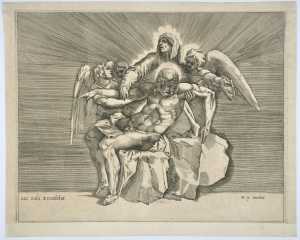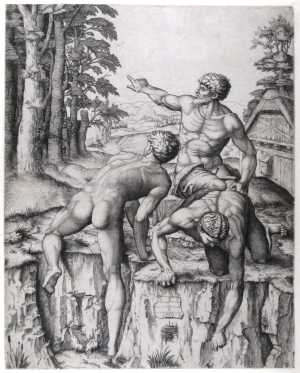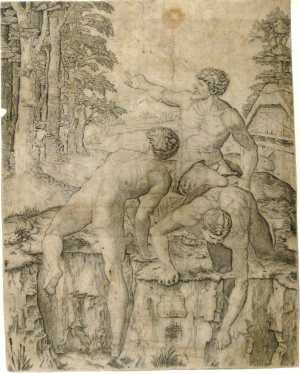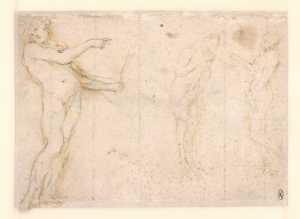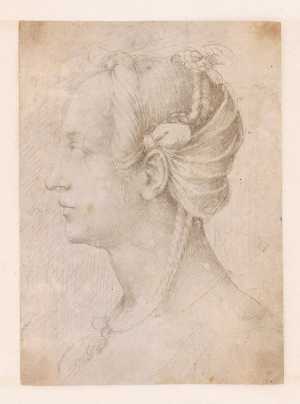Michelangelo was undoubtedly one of the best known and most successful artists of the Italian Renaissance. A painter, a sculptor, a poet and an architect, he was apprenticed to the Florentine painter Domenico Ghirlandaio at an early age. He also studied the classical statuary in the sculpture garden of Lorenzo de’ Medici, nicknamed ‘il Magnifico’ (the Magnificent), near the Church of San Marco in Florence. Initially Michelangelo devoted himself to sculpture and produced a number of masterpieces while he was still very young, among them the ‘Pietà’ in St Peter’s Church in Rome and the ‘David’ in the Galleria dell’Accademia in Florence. At the start of the 16th century, Pope Julius II summoned him to Rome to paint frescos of stories from the Old Testament on the ceiling of the Sistine Chapel. Although the artist already had a good name, these frescos secured his reputation as the greatest artist of his time, and prompted his nickname ‘il divino Michelangelo’ (the divine Michelangelo). Michelangelo lived to be nearly ninety and underwent a major development in style during his lifetime, in his paintings and his sculptures. In his first active period, like Leonardo da Vinci, Fra Bartolommeo and Raphael, he was one of the exponents of the High Renaissance; a style that sought to capture a true-to-life representation of the visible world whilst also striving to achieve a kind of ‘ideal beauty’. Michelangelo perfected the depiction of human anatomy by studying and drawing classical sculpture. Around 1520 he began to work in the Mannerist style, representing the human body in distorted and sometimes almost impossible poses (see, for example, the ‘Last Judgement’, which he painted in the Sistine Chapel between 1534 and 1541). Michelangelo was in his eighties when he died in Rome in 1564. The recently established Florentine art academy (‘Accademia del Disegno’) paid a final tribute to the artist in 1564 by organizing a large funeral ceremony in the Basilica di San Lorenzo in Florence. Michelangelo is interred in the Basilica di Santa Croce.

Michelangelo Buonarroti
Caprese 1475 - Rome 1564


